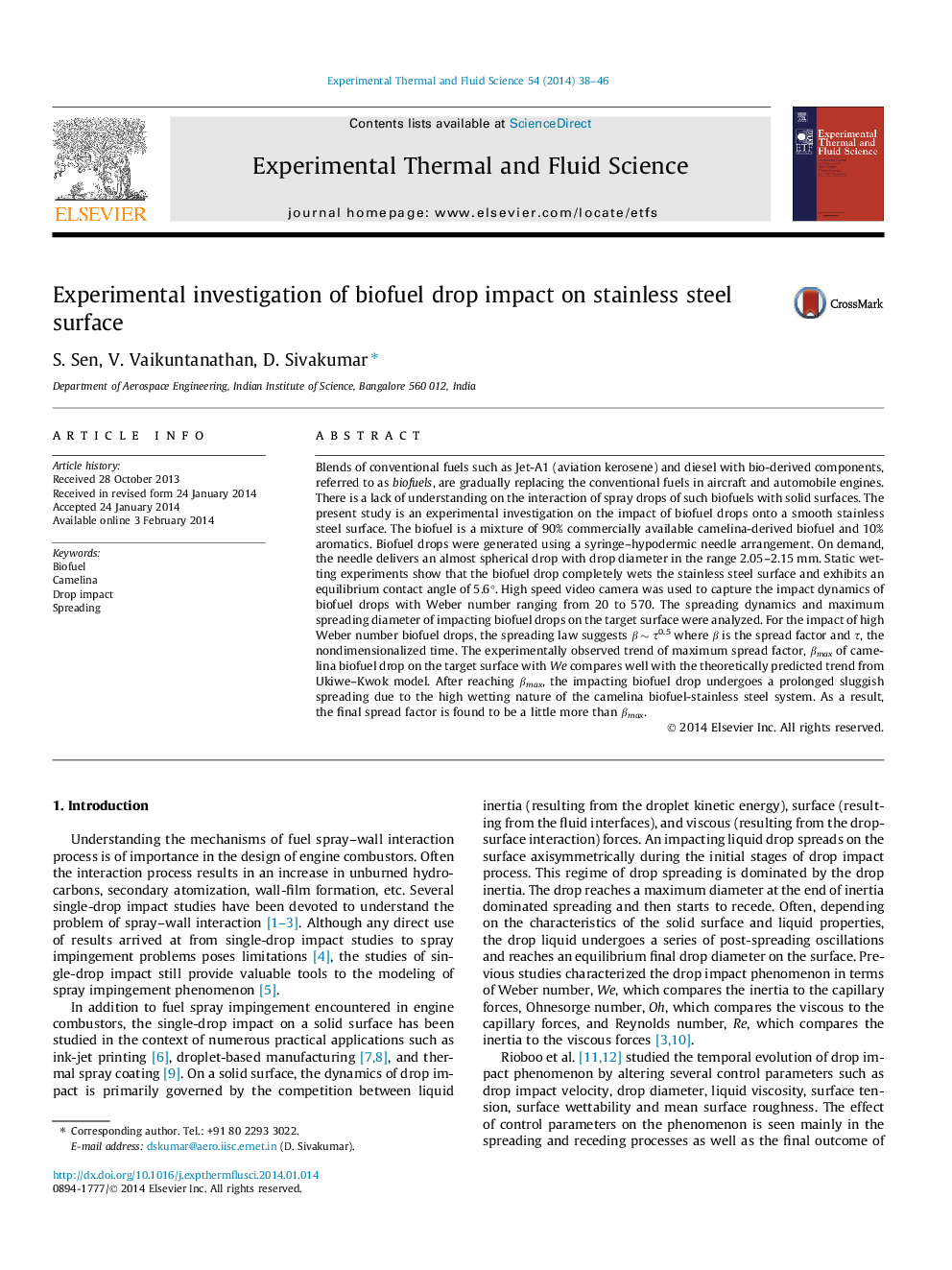| کد مقاله | کد نشریه | سال انتشار | مقاله انگلیسی | نسخه تمام متن |
|---|---|---|---|---|
| 7052506 | 1457422 | 2014 | 9 صفحه PDF | دانلود رایگان |
عنوان انگلیسی مقاله ISI
Experimental investigation of biofuel drop impact on stainless steel surface
ترجمه فارسی عنوان
بررسی تجربی اثر افت سوخت زیستی بر سطح فولاد ضد زنگ
دانلود مقاله + سفارش ترجمه
دانلود مقاله ISI انگلیسی
رایگان برای ایرانیان
کلمات کلیدی
سوخت های زیستی، کاملیا، ضربه قطره، گسترش
موضوعات مرتبط
مهندسی و علوم پایه
مهندسی شیمی
جریان سیال و فرایندهای انتقال
چکیده انگلیسی
Blends of conventional fuels such as Jet-A1 (aviation kerosene) and diesel with bio-derived components, referred to as biofuels, are gradually replacing the conventional fuels in aircraft and automobile engines. There is a lack of understanding on the interaction of spray drops of such biofuels with solid surfaces. The present study is an experimental investigation on the impact of biofuel drops onto a smooth stainless steel surface. The biofuel is a mixture of 90% commercially available camelina-derived biofuel and 10% aromatics. Biofuel drops were generated using a syringe-hypodermic needle arrangement. On demand, the needle delivers an almost spherical drop with drop diameter in the range 2.05-2.15 mm. Static wetting experiments show that the biofuel drop completely wets the stainless steel surface and exhibits an equilibrium contact angle of 5.6°. High speed video camera was used to capture the impact dynamics of biofuel drops with Weber number ranging from 20 to 570. The spreading dynamics and maximum spreading diameter of impacting biofuel drops on the target surface were analyzed. For the impact of high Weber number biofuel drops, the spreading law suggests β â¼Â Ï0.5 where β is the spread factor and Ï, the nondimensionalized time. The experimentally observed trend of maximum spread factor, βmax of camelina biofuel drop on the target surface with We compares well with the theoretically predicted trend from Ukiwe-Kwok model. After reaching βmax, the impacting biofuel drop undergoes a prolonged sluggish spreading due to the high wetting nature of the camelina biofuel-stainless steel system. As a result, the final spread factor is found to be a little more than βmax.
ناشر
Database: Elsevier - ScienceDirect (ساینس دایرکت)
Journal: Experimental Thermal and Fluid Science - Volume 54, April 2014, Pages 38-46
Journal: Experimental Thermal and Fluid Science - Volume 54, April 2014, Pages 38-46
نویسندگان
S. Sen, V. Vaikuntanathan, D. Sivakumar,
